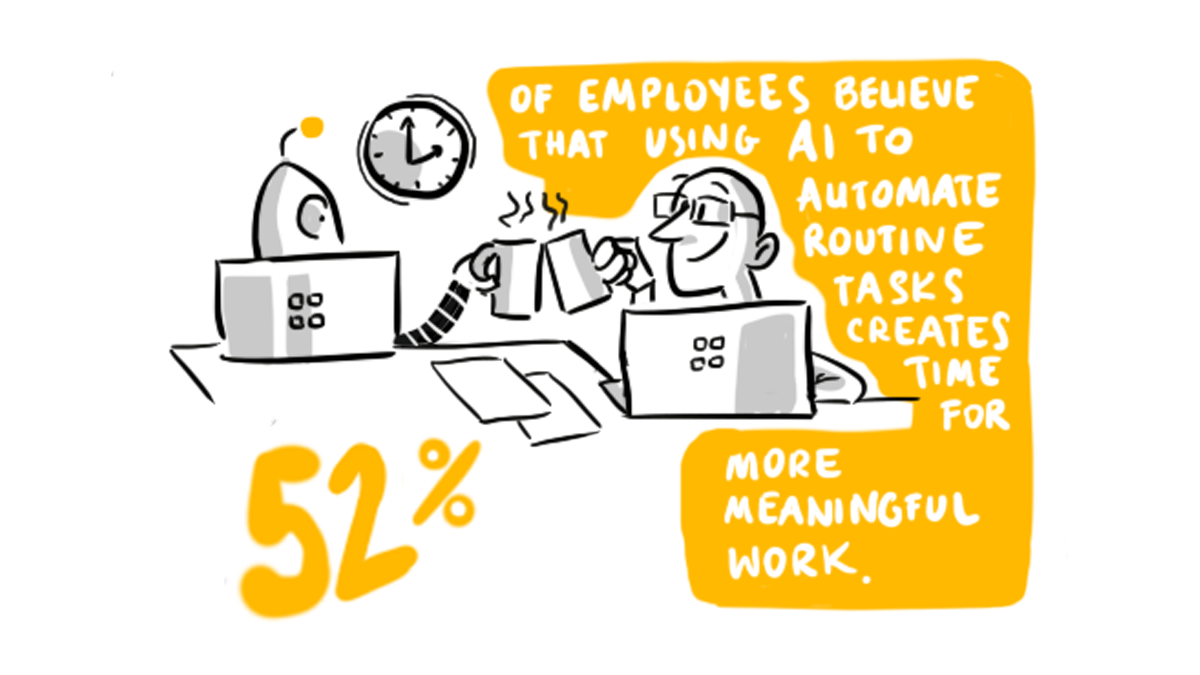
How to get started with AI
 AI is quickly becoming an important part of our lives, but it’s not new. Most of us are using AI every day, often without realising. It helps us sort our emails, automatically removing spam from our inbox. It gives us personalised recommendations when shopping, assists us when parking cars and can even translate languages in real time.
AI is quickly becoming an important part of our lives, but it’s not new. Most of us are using AI every day, often without realising. It helps us sort our emails, automatically removing spam from our inbox. It gives us personalised recommendations when shopping, assists us when parking cars and can even translate languages in real time.
It’s increasingly helping us in our personal lives, but what does this mean for your business? AI can collect and analyse data faster than any human, but it’s not designed to replace us. It’s designed to work with us, amplifying our ingenuity. This enables us to focus our time and energy on more meaningful work that uses our distinctly human traits. Traits like emotional intelligence and creativity.
In healthcare, computers are learning to read radiological images faster than medical practitioners, but this doesn’t mean we don’t need the experts. It simply means they can focus their time on creating tailored treatment plans for their patients instead. Something that’s often a timely and expensive process. It is also making banking easier and more secure, helping identify fraud and, ultimately, delivering a better experience for customers.
“The messaging behind AI is critical. We’re not automating workers, we’re automating work” – Terry Walby, CEO, Thoughtonomy
Organisations that are already on the AI journey are more productive and see 5% greater business outcomes than those who aren’t, but it can be a little overwhelming to figure out how to get started. It’s all about seizing your opportunities and keeping the human experience in mind.
Here’s how you can embrace AI’s potential:
1. Start with a problem you’re looking to solve
Don’t use AI just for the sake of it. Think about how you can address your current business challenges or disrupt your industry. Ask your employees, your leadership team, and your board for their thoughts to get a thorough representation of opinions.
Microsoft’s online survey is designed to help you to think about how you can use AI in your business. Perhaps you’d like to improve your customer experience? You could create a chatbot to help your customers and employees research and find products so they have a consistent experience, both in-store and online. Or you could use AI to predict trends for advertising so you can create more targeted ads and generate more sales.
2. Bring the whole organisation on the journey with you
Technological changes often aren’t a ‘one size fits all’ approach. Listen to your employee’s experiences and feedback, and show how AI can make their roles easier.
Make this change a positive one. Train employees today for the skills they will need in the future. Skilled employees more empowered and are proven to be 8.4 percent more productive. Companies that offer ongoing staff training also have higher retention. 70 percent of employees say development opportunities influenced their decision to stay at a company.
3. Take action
Run a hackathon and get your employees hands-on with the technology. AI isn’t something to implement and leave; it should grow, adapt, and improve. Developing, improving and critiquing AI, based on real experiences, will deliver much better outcomes for your business.
AI will continue to disrupt business in new and interesting ways. It’s not something you can ignore. Will you be the leader of the revolution or will you quietly disappear into the background?





